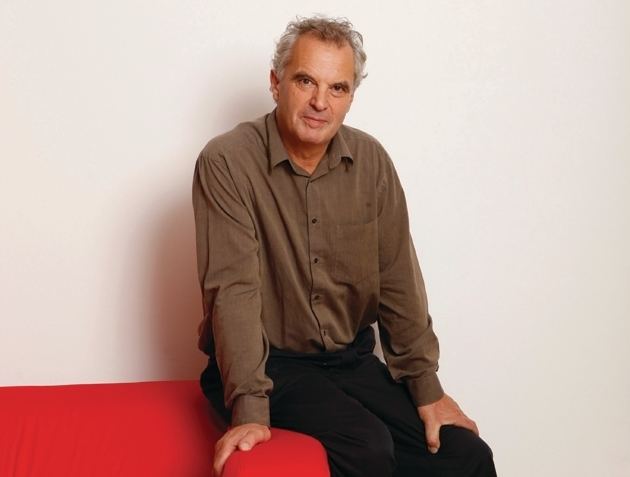Name Mark Whitby Role Civil engineer | ||
 | ||
Olympic medals Canoeing at the 1968 Summer Olympics – Men's K-2 1000 metres | ||
Organizations founded Whitbybird and Partners | ||
Mark whitby for architects journal
Mark Whitby, BSc, FICE, FREng, Hon FRIBA, (born 29 January 1950) is a British structural engineer, and a past President of the Institution of Civil Engineers (2001-2002). He co-founded the multi-disciplinary engineering practice Whitby & Bird (later known as whitbybird), and WME (Whitby Mohajer). He was also a British sprint canoeist, representing Great Britain at the 1968 Summer Olympics in Mexico City, where he was eliminated in the semifinals of the K-2 1000 m event.
Contents
- Mark whitby for architects journal
- 1990 02 15 gordon pask cedric price mark whitby
- Early life and education
- Career
- Engineering projects
- Teaching
- References
1990 02 15 gordon pask cedric price mark whitby
Early life and education
Whitby was born in Ealing, West London, the third of the six children of architect George Whitby (1916-1973, McMorran & Whitby). He was educated at Ealing Grammar School for Boys (1961-1968), followed by undergraduate studies in engineering at King's College London (1969-1972).
Career
After graduation, Whitby worked for consulting engineer Harris & Sutherland for a year, followed by four years on site for Sir Lindsay Parkinson/Sir John Fairclough (AMEC) and a period on site for civil engineering contractor John Howard and Co. Ltd. He then joined consulting engineer Buro Happold. A year or two later, he took up a position with Anthony Hunt & Associates. While there, he worked on a series of diverse projects, including the High Tech Patera Building System designed by British architect Michael Hopkins, Halley IV research station for the British Antarctic Survey, and a timber dome at Crestone, Colorado, USA, with architect Keith Critchlow. In 1982, he set up a London office for Leeds-based Robert T Horne & Partners.
In 1983, Whitby co-founded engineering partnership Whitby & Bird with Bryn Bird, who had also worked at Harris & Sutherland. Mike Crane joined as a partner in 1985. The practice later changed its name to Whitby Bird & Partners, then whitbybird. Whitby was a director of the company. Notable projects include several bridges in the UK and the British Embassies in Dublin and Berlin. He developed a media profile and started to be consulted on engineering issues for TV and radio. In this period, he also co-founded energy consultant Element Energy.
In August 2007, whitbybird merged with Danish engineering group Ramboll, and was rebranded Ramboll Whitbybird. Whitby remained with the company, and when in April 2009 it became Ramboll UK, he was named Chairman, a position he retained until he left later the same year. Before he left, he was director responsible for the company’s commission to undertake engineering services for the extension to Tate Modern (architect: Herzog & de Meuron).
Between 2010 and 2016, Whitby was a director of structural engineering consultancy Davies Maguire + Whitby, which he co-founded in 2010. In that period, he also co-founded Whitby & Mohajer Engineers (now WME) in Dubai in 2011 with structural engineer Peyman Mohajer. In 2016, he set up the London office of WME with co-director Sebastian Wood, and this London practice changed its name to Whitby Wood in 2017.
Whitby served as a Member of Council at the Institution of Civil Engineers (ICE) from 1993-1996. In 1998, he became the ICE’s Vice President (Education), then served as President from 2001-2002.
In 2006, he co-authored the Report of the First Enquiry 2006, All Party Parliamentary Climate Change Group: Is a Cross-Party Consensus on Climate Change Possible — or Desirable?, with Dr Helen Clayton and Prof Nick Pidgeon.
He has also been instrumental in the formation of a number of organisations that cover the broad culture of engineering. In the 1980s, he founded the Engineering Club, which is an association of engineering practices that hosts events in central London (ongoing). He also founded Engineering Timelines, an education charity that runs a website on the history of engineering. In the late 1990s, he co-founded the multidisciplinary built environment think tank, The Edge. He is President of the Trustees of CODEP (Construction and Development Partnership), a construction industry-led charity working in London and Sierra Leone.
Whitby appeared with archaeologist Julian Richards in the BBC TV series, Secrets of Lost Empires: Stonehenge (1994, broadcast 1997), in which the team tried (and succeeded) to move and erect simulated standing stones using only the technologies available to prehistoric builders.
Engineering projects
Structural engineering projects, and projects for which Whitby was instrumental in the construction, include:
Teaching
Throughout his career, Whitby has taught engineering and architecture students at tertiary level, and delivered public and private lectures. He has taught at Oxford Brookes University (1982-1998) (lecturer, tutor, examiner), the University of Cambridge (part time) (structural philosophy) and the Architectural Association (1984-1998) (lecturer, tutor). In 2007, he was appointed Special Professor of Sustainable Construction Professor at Nottingham University, and in March 2014, Visiting Professor in Structural Engineering at the Bartlett School of Architecture.
Among the subjects of his public lecures are the Fukushima Daiichi nuclear disaster, the work of engineer Peter Rice (1935-1992), how Stonehenge might have been built, and the work and professional practice of whitbybird.
